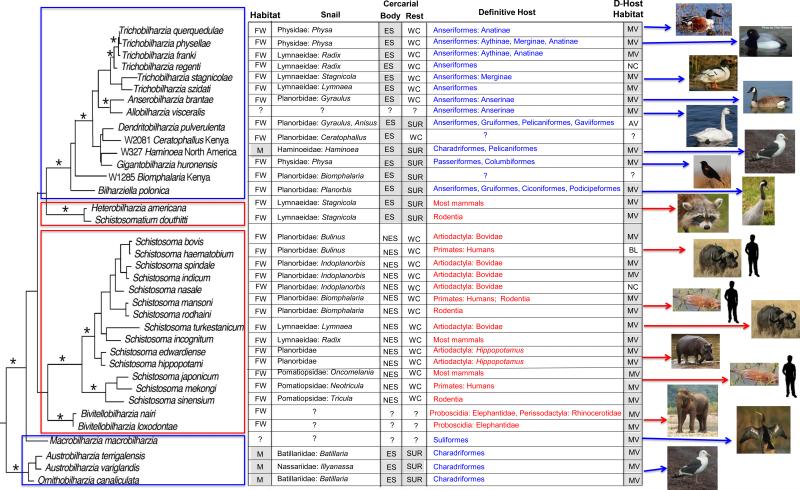Figure 1. Schistosome phylogeny, including some key attributes for each taxon.
Phylogenetic tree showing the positions of schistosome genera and species, based on Bayesian analysis [11, 28, 29, 90] of the nuclear ribosomal DNA 28S region (1200 bp) for sequences available in GenBank [1, 7, 11, 28, 29]. Mammalian schistosomes are highlighted in red, and avian schistosomes in blue. The tree confirms the robust-bodied marine avian schistosome genera, Austrobilharzia + Ornithobilharzia, as constituting the basal schistosome clade [36]. Two additional well-resolved major branches were retrieved consistently, one constituted by the robust-bodied mammalian parasites Schistosoma spp. + Bivitellobilharzia, and the other by the remaining, largely filiform avian schistosomes (Bilharziella, Dendritobilharzia, Gigantobilharzia, Allobilharzia, Anserobilharzia, + Trichobilharzia). Two additional robust-bodied lineages have not received consistent positional support within the tree. One is comprised of the North American mammalian schistosomes, Heterobilharzia + Schistosomatium. The second is Macrobilharzia, known only as adult worms from anhingas and cormorants. As a consequence of the unstable placement of these two lineages, determination as to whether there have been one or two origins of mammalian schistosomes from avian schistosomes is not yet possible. Also, deeper branches remain without significant nodal support. The table following the tree compares some major features defining the above-mentioned clades of schistosomes, including host use, morphology and behavior in adults and cercariae (see [1] for more details). Shaded gray boxes are those features that are found in the basal clade Austrobilharzia + Ornithobilharzia and thus represent the ancestral features of the family. Asterisks denote significant posterior probabilities (>0.95). Abbreviations: Habitat of the snail hosts (FW, freshwater; M, marine); major morphological and behavioral difference among cercariae, respectively (ES, eye spots present; NES, no eye spots present; WC, swims in water column; SUR, adheres to surface film); habitat of adult schistosomes in the bird or mammalian host (MV, mesenteric veins; NC, nasal cavity; AV, arterial system; BL, bladder).

